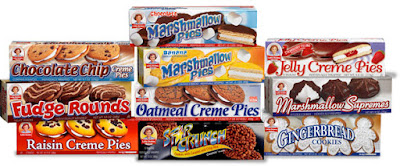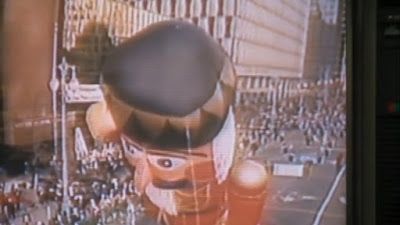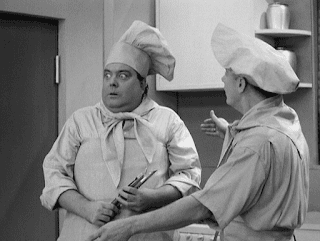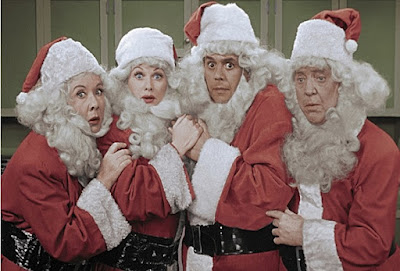I hope you enjoyed Monday's list of songs that turn 40 this year! Keep reading for another fun list of songs that are turning 35! How many do you remember? How many can you still sing along to whenever you hear them? Admit it, you scream them out loud! Don't worry, I do too!
Songs Turning 35 in 2025:
"Nothing Compares 2 U" by Sinead O'Connor
January 8, 1990
"Nothing Compares 2 U" is a song Prince wrote for his band "The Family." It first appeared on their only album in 1985, expressing the feelings of longing by an abandoned lover.
Irish singer-songwriter Sinead O'Connor recorded her version for her second studio album, "I Do Not Want What I Haven't Got," which was released as the second single in January 1990. The song was immediately a worldwide hit. The music video, directed by John Maybury, received heavy rotation on MTV, and in December 1990, the song was named "1990's #1 World Wide Single" at the first Billboard Music Awards.
"The Humpty Dance" by Digital Underground
January 20, 1990
From the debut album "Sex Packets," Digital Underground released "The Humpty Dance" as the second single from the album. The song is sung by band member Shock G's alter ego, "Humpty Hump," marking the character's second musical appearance. The song is a tribute to "Humpty's" sexual prowess despite his ridiculous appearance. The song's final verse describes the Dance as a loose, easy dance "like MC Hammer on crack... anyone can play this game."
The song was nominated for Best Rap Video at the 1990 MTV Video Music Awards but lost to "U Can't Touch This" by MC Hammer, who got the last laugh for being name-checked in the final verse.
Rolling Stone considers this song #241 of the 500 Greatest Songs of All Time. VH1 ranked the song #65 on its 100 Greatest Songs of the 90s list in 2007 and #30 on its 100 Greatest Songs of Hip Hop list in 2008.
"Enjoy the Silence" by Depeche Mode
February 6, 1990
Recorded in early 1989, it was released as the second single from their seventh studio album in February 1990. It became the band's highest-charting single in the United States, peaking at number 8. Described by the band as containing elements of "lush synth beds, haunting melodies, and aching lyrics," this song blends the band's techno-pop and trendy synth house-style grooves. Or so they claim, anyway.
The music video, directed by Anton Corbijn, references the philosophical children's book The Little Prince by Antoine de Saint-Exupéry. In the video, Dave Gahan appears dressed as a king and wanders the hillsides with a deck chair.
"Hold On" by Wilson Phillips
February 27, 1990
Released in February, "Hold On" was the lead single from Wilson Phillips's self-titled debut album. For a week in June, it reached the top of the US Billboard Hot 100 and was the most successful single of that year in the United States. It also became a worldwide hit, reaching the top three in Canada and Australia.
The song also won the Billboard Music Award for Hot 100 Single of the Year in 1990 and was nominated for Song of the Year and Best Pop Vocal Performance by a Duo or Group at the Grammy Awards that year. However, it lost in both categories. In 2017, Billboard ranked it number 15 on their "100 Greatest Girl Group Songs of All Time. In 2022, Pitchfork ranked it number 246 of the 250 Best Songs of the 1990s.
"Poison" by Bell Biv DeVoe
March 6, 1990
This song marks the debut of Bell Biv DeVoe, who released "Poison" as the first single from their debut album. The song, in a "new jack swing" style, was a late-80s/early-90s hybrid of R&B, hip hop, and swing music. It was the band's most successful outing.
The song peaked at number three on the Billboard Hot 100 Singles chart for three weeks in June 1990 and was also number one on the Hot Black Singles chart. "Poison" became one of the most successful songs of 1990 and was a longtime staple of MTV and mainstream radio during the summer of 1990.
The music video was purposefully done in purple, with a purple-tinted filter to insinuate "female poison."
"It Must Have Been Love" by Roxette
March 19, 1990
Originally titled "Christmas for the Broken Hearted," in 1987, the Swedish pop duo Roxette re-recorded the song for the 1990 film Pretty Woman. This more successful incarnation was a slightly edited and overdubbed version that omitted any Christmas references. The power ballad became the duo's third number-one hit in the United States and is one of their best-selling releases, certified gold or platinum in several countries. It remains their most well-known and signature song.
Doug Freel directed a second music video, which was shot inside a warehouse and included clips from Pretty Woman. The band had to lip-sync the vocals at double speed to make all movements appear correct in slow motion. As of January 2025, the video has more than 854 million views on YouTube.
"Vogue" by Madonna
March 20, 1990
Off her soundtrack album "I'm Breathless" in 1990, "Vogue" is written and produced by herself and Shep Pettibone. Inspired by "voguing," a dance popular in the underground New York gay scene, this song is influenced by disco and house-dance music. It contains what Madonna calls "escapist lyrics," describing the dance floor as a place without boundaries as she name-drops several actors from the Golden Age of Hollywood.
The song reached the top of the charts in America, Australia, Canada, Japan, and the United Kingdom.
The black-and-white music video, directed by David Fincher, was shot within 16 hours while she rehearsed for her Blond Ambition World Tour. It received nine nominations at the 1990 MTV Video Music Awards, including Best Video.
"Step by Step" by New Kids on the Block
May 10, 1990
"Step by Step" was the first single from the album of the same name and is the group's biggest-selling hit single to date. Sung by Jordan Knight, Danny Wood, and Donnie Wahlberg of NKOTB, it was first recorded by one of producer Maurice Starr's other bands, The Superiors, in 1987.
It spent three weeks at number one on the US Billboard Hot 100 and was in the Top 10 in countless other countries worldwide. Bill Coleman from Billboard wrote, "Unstoppable Teen Idols preview upcoming album of the same name with a perky pop/dance confection rife with disco-era string fills. The phenomenon continues."
Donnie's brother, Mark Wahlberg, appears in the music video.
"U Can't Touch This" by MC Hammer
May 29, 1990
MC Hammer co-wrote, produced, and performed what is now considered his signature song. In late 1989, the song was first performed publicly on an episode of The Arsenio Hall Show. The song has been used or referred to in many television shows, films, and commercials. The lyrics "You can't touch this" and "Stop! Hammer time!" became pop culture catchphrases, and the term "Hammertime" was later used as the title of a reality show starring Hammer on A&E in 2009.
It won a Grammy Award for Best R&B Song and Rap Solo Performance in 1990. In 1991, it was the first rap song nominated for a Grammy for Record of the Year. It peaked at number one on the Billboard Hot R&B/Hip-Hop Singles chart for several weeks.
The song samples the prominent opening riff of Rick James' 1981 single "Super Freak." The "Super Freak" sample led James to file a lawsuit for copyright infringement. The case was settled out of court, and Hammer agreed to credit James as a songwriter, effectively granting him millions of dollars in royalties.
"Blaze of Glory" by Jon Bon Jovi
July 21, 1990
"Blaze of Glory" is Jon Bon Jovi's debut solo single. In 1990, it reached number one on the US Billboard Hot 100 and Album Rock Tracks chart, his only chart-topper outside of his band Bon Jovi. The song also reached the top of the charts in Australia, Canada, and New Zealand, but it only reached 13 in the UK.
Jon Bon Jovi recorded the power ballad because actor Emilio Estevez requested Bon Jovi's song "Wanted Dead or Alive" for the soundtrack to the film Young Guns II. Bon Jovi did not think the lyrics about the band's constant tours fit the theme of the Western movie, so he wrote Blaze of Glory instead to be more topical for the Estevez movie.
The song remains a crowd favorite among Bon Jovi fans, even though the song was not released as one of the band's singles and was only released by Jon. The music video was filmed at The Rectory near Moab, Utah.
"Ice Ice Baby" by Vanilla Ice
August 22, 1990
"Ice Ice Baby" is the debut single and most popular song for rapper Vanilla Ice. Sampling the bassline of the song "Under Pressure" by Queen (who did not receive credit or royalties until much later), the song was unsuccessful initially. When DJ David Morales began playing the song in nightclubs, it quickly gained a following.
"Ice Ice Baby" was the first hip-hop single to top the Billboard Hot 100. It also topped the charts in Australia, Belgium, the Netherlands, New Zealand, Ireland, the UK, and Germany.
Robert Van Winkle, aka Vanilla Ice, claims to have written the song in 1983 (at the age of 16), basing its lyrics on his experiences living in South Florida. The lyrics describe a shooting and his rhyming skills, and the chorus originates from the chant of the national African American fraternity Alpha Phi Alpha.
The song samples the bassline of Queen and David Bowie's 1981 song "Under Pressure." In a 1990 interview, Vanilla Ice ridiculously claimed the two melodies were slightly different because he added one additional note. After Queen and Bowie threatened a suit for copyright infringement, the matter was settled out of court, with Vanilla Ice paying financial recompense to the original artists.
Vanilla Ice expertly explains the difference between the one note in his song and Queen's
Suddenly, after the massive success of the song, California rapper Mario "Chocolate" Johnson, an associate of Suge Knight, claimed he wrote the song and had not received credit or royalties. Knight and two bodyguards arrived one night at The Palm in West Hollywood, where Vanilla Ice was eating. After shoving Ice's bodyguards aside, Knight and his bodyguards intimidated Vanilla Ice. Several incidents were repeated until one night, Suge Knight, Chocolate Johnson, and an unnamed member of the Los Angeles Raiders showed up at Ice's suite on the fifteenth floor of the Bel Age Hotel.
According to Vanilla Ice, Suge Knight took him out on the balcony and threatened to throw him off the balcony unless he signed over the rights to the song. Ice signed, and Suge used the money to form his famed (infamous?) production company, Death Row Records.






.png)





Comments